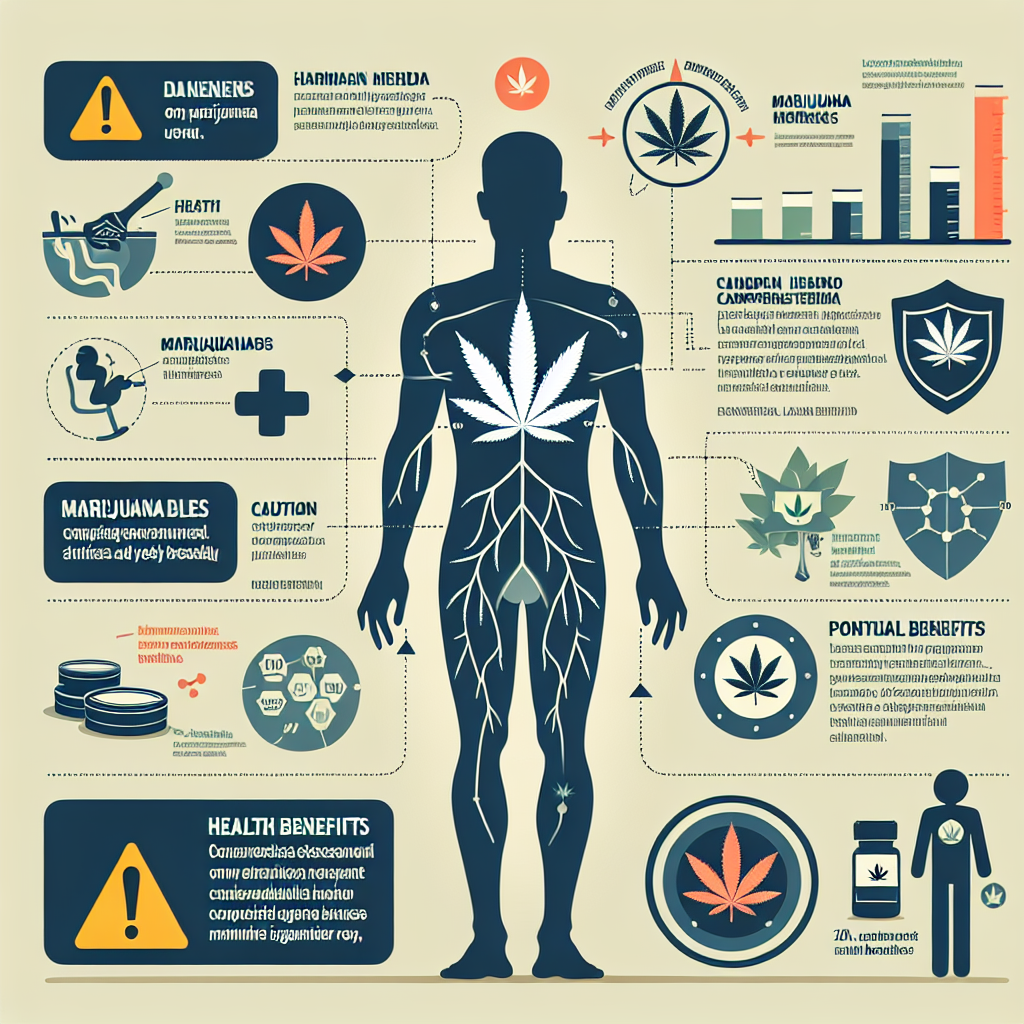Marijuana, also known as cannabis, has been a subject of significant debate and research over the years. As societal attitudes shift and legal landscapes evolve, understanding the effects and benefits of marijuana use becomes increasingly important. This introduction delves into the multifaceted nature of marijuana, exploring its historical context, the active compounds responsible for its effects, and the potential therapeutic benefits it offers. By examining both the positive and negative aspects of marijuana use, this discussion aims to provide a comprehensive overview that informs and educates on this complex and often controversial topic.
Medical Benefits Of Marijuana: A Comprehensive Overview
Marijuana, also known as cannabis, has been a topic of significant debate and research over the years. As societal attitudes shift and more regions move towards legalization, understanding the medical benefits of marijuana becomes increasingly important. This comprehensive overview aims to shed light on the various ways marijuana can be beneficial for medical purposes, while also addressing some of the complexities involved.
To begin with, one of the most well-documented benefits of marijuana is its ability to alleviate chronic pain. Chronic pain affects millions of people worldwide and can be debilitating. Traditional pain medications, such as opioids, often come with a high risk of addiction and other severe side effects. In contrast, marijuana has been shown to provide effective pain relief with a lower risk of dependency. Cannabinoids, the active compounds in marijuana, interact with the body’s endocannabinoid system to reduce pain and inflammation, offering a natural alternative for pain management.
Moreover, marijuana has been found to be particularly beneficial for patients undergoing chemotherapy. Chemotherapy, while effective in treating cancer, often comes with a host of unpleasant side effects, including nausea and vomiting. Studies have demonstrated that marijuana can significantly reduce these symptoms, improving the quality of life for cancer patients. The antiemetic properties of cannabinoids help in controlling nausea, making it easier for patients to maintain their strength and continue with their treatment regimen.
In addition to its antiemetic properties, marijuana has also shown promise in treating neurological and mental health conditions. For instance, it has been used to manage symptoms of multiple sclerosis (MS), a condition that affects the central nervous system. Patients with MS often experience muscle spasms and stiffness, which can be incredibly painful. Marijuana’s muscle relaxant properties can help alleviate these symptoms, providing much-needed relief. Furthermore, research suggests that marijuana may have neuroprotective effects, potentially slowing the progression of neurodegenerative diseases like Alzheimer’s.
Transitioning to mental health, marijuana has been explored as a treatment for anxiety and post-traumatic stress disorder (PTSD). While the relationship between marijuana and mental health is complex and requires careful consideration, some patients have reported significant improvements in their symptoms. The calming effects of certain strains of marijuana can help reduce anxiety and promote relaxation, making it easier for individuals to cope with their daily lives. However, it is crucial to note that marijuana’s impact on mental health can vary greatly from person to person, and professional guidance is essential.
Another area where marijuana has shown potential is in the treatment of epilepsy, particularly in children with severe forms of the condition. Cannabidiol (CBD), a non-psychoactive compound found in marijuana, has been found to reduce the frequency and severity of seizures in some patients. This has led to the development of CBD-based medications that have been approved for use in treating certain types of epilepsy, offering hope to families who have struggled to find effective treatments.
While the medical benefits of marijuana are promising, it is important to approach its use with caution. The variability in individual responses and the potential for side effects necessitate a personalized approach to treatment. Consulting with healthcare professionals who are knowledgeable about medical marijuana is essential to ensure safe and effective use.
In conclusion, marijuana offers a range of medical benefits that can significantly improve the quality of life for many patients. From pain relief and antiemetic properties to potential treatments for neurological and mental health conditions, the therapeutic potential of marijuana is vast. As research continues and our understanding deepens, it is likely that marijuana will play an increasingly important role in medical treatment, providing new avenues for relief and healing.
The Psychological Effects Of Marijuana: What You Need To Know

Marijuana use has been a topic of much debate and research over the years, particularly concerning its psychological effects. Understanding these effects is crucial for anyone considering its use, whether for medicinal or recreational purposes. To begin with, it’s important to recognize that marijuana contains compounds known as cannabinoids, with THC (tetrahydrocannabinol) and CBD (cannabidiol) being the most well-known. THC is primarily responsible for the psychoactive effects, while CBD is often associated with therapeutic benefits without the high.
When discussing the psychological effects of marijuana, one of the most immediate and noticeable is the alteration in mood and perception. Many users report feelings of euphoria, relaxation, and an overall sense of well-being. This is largely due to THC’s interaction with the brain’s endocannabinoid system, which plays a role in regulating mood, memory, and pain sensation. However, these effects can vary significantly from person to person, influenced by factors such as the strain of marijuana, the method of consumption, and individual tolerance levels.
While the short-term effects can be pleasant for many, it’s also important to consider potential negative psychological impacts. For some individuals, especially those predisposed to mental health issues, marijuana use can exacerbate conditions like anxiety and depression. In certain cases, high doses of THC can lead to paranoia or even acute psychosis, characterized by hallucinations and delusions. These adverse effects underscore the importance of using marijuana responsibly and being aware of one’s mental health history.
Transitioning to the long-term psychological effects, research presents a more complex picture. Regular, heavy use of marijuana, particularly starting in adolescence, has been linked to cognitive impairments. Studies suggest that chronic use can affect memory, attention, and learning capabilities. This is particularly concerning for young users, as the adolescent brain is still developing, and marijuana can potentially interfere with this critical process. However, it’s worth noting that these cognitive deficits are often reversible with prolonged abstinence.
On a more positive note, marijuana has shown promise in treating various psychological conditions. For instance, CBD has been found to have anxiolytic (anxiety-reducing) properties, making it a potential treatment for anxiety disorders. Additionally, marijuana is increasingly being used to alleviate symptoms of PTSD (Post-Traumatic Stress Disorder). Veterans and others suffering from PTSD have reported significant relief from symptoms such as insomnia, nightmares, and hypervigilance through controlled marijuana use.
Moreover, marijuana’s impact on creativity and divergent thinking is another area of interest. Some users claim that marijuana enhances their creative processes, allowing them to think more freely and come up with novel ideas. While scientific evidence on this is still limited, anecdotal reports suggest that marijuana can indeed stimulate creative thinking in some individuals.
In conclusion, the psychological effects of marijuana are multifaceted and can vary widely among users. While it offers potential benefits, particularly in the realm of mental health treatment, it also carries risks that should not be overlooked. Responsible use, awareness of one’s mental health, and staying informed about the latest research are key to navigating the complex landscape of marijuana’s psychological effects. By understanding both the positive and negative aspects, individuals can make more informed decisions about their marijuana use.
Marijuana And Pain Management: How It Works
Marijuana has been a topic of considerable debate and research, particularly in the realm of pain management. Understanding how marijuana works to alleviate pain involves delving into the complex interactions between its active compounds and the human body’s endocannabinoid system. This system plays a crucial role in regulating various physiological processes, including pain sensation, mood, and appetite. The primary compounds in marijuana, known as cannabinoids, include tetrahydrocannabinol (THC) and cannabidiol (CBD). These cannabinoids interact with cannabinoid receptors in the body, specifically CB1 and CB2 receptors, to produce their effects.
When THC binds to CB1 receptors, which are predominantly found in the brain and central nervous system, it can alter pain perception and provide relief. This interaction is why THC is often associated with the psychoactive effects of marijuana, such as euphoria and altered sensory perception. On the other hand, CBD does not produce a high and primarily interacts with CB2 receptors, which are more abundant in the immune system and peripheral tissues. CBD’s anti-inflammatory properties can help reduce pain and inflammation without the psychoactive effects associated with THC.
Transitioning to the practical applications of marijuana in pain management, it is essential to consider the various forms in which it can be consumed. These include smoking or vaporizing the plant, consuming edibles, using tinctures, or applying topical creams. Each method has its own onset time and duration of effects, allowing patients to choose the most suitable option for their needs. For instance, smoking or vaporizing provides almost immediate relief, making it ideal for acute pain episodes. In contrast, edibles take longer to produce effects but offer prolonged relief, which can be beneficial for chronic pain conditions.
Moreover, the effectiveness of marijuana in pain management has been supported by numerous studies. Research has shown that marijuana can be particularly effective in treating neuropathic pain, which is often resistant to conventional painkillers. Conditions such as multiple sclerosis, fibromyalgia, and diabetic neuropathy have shown positive responses to marijuana treatment. Additionally, marijuana has been found to be beneficial for patients undergoing chemotherapy, as it can alleviate both pain and nausea, improving their overall quality of life.
However, it is important to acknowledge that marijuana is not a one-size-fits-all solution. The effectiveness of marijuana for pain management can vary depending on the individual’s unique physiology, the type and severity of pain, and the specific strain and dosage used. Consulting with a healthcare professional who is knowledgeable about medical marijuana can help tailor the treatment to the patient’s specific needs and ensure safe and effective use.
Furthermore, while marijuana offers promising benefits for pain management, it is not without potential side effects. Common side effects include dizziness, dry mouth, and changes in appetite. More serious risks, such as dependency and impaired cognitive function, are generally associated with long-term use and higher doses of THC. Therefore, it is crucial to use marijuana responsibly and under medical supervision, especially for individuals with a history of substance abuse or mental health conditions.
In conclusion, marijuana presents a viable option for pain management, offering relief for various types of pain through its interaction with the endocannabinoid system. By understanding how marijuana works and considering the different methods of consumption, patients can make informed decisions about its use. While it holds significant potential, it is essential to approach marijuana with caution and seek professional guidance to maximize its benefits and minimize risks.
The Impact Of Marijuana On Mental Health: Risks And Benefits
Marijuana use has been a topic of considerable debate, particularly when it comes to its impact on mental health. As more states and countries move towards legalization, understanding the risks and benefits associated with marijuana use becomes increasingly important. On one hand, marijuana has been praised for its potential therapeutic benefits, while on the other, concerns about its impact on mental health persist. To navigate this complex landscape, it is essential to consider both the positive and negative effects of marijuana on mental health.
One of the most well-documented benefits of marijuana is its ability to alleviate symptoms of certain mental health conditions. For instance, many individuals with anxiety disorders have reported that marijuana helps them manage their symptoms more effectively. The calming effects of certain cannabinoids, such as CBD, can provide relief from the constant state of worry and tension that characterizes anxiety. Similarly, marijuana has been found to be beneficial for those suffering from post-traumatic stress disorder (PTSD). By reducing the intensity of flashbacks and nightmares, marijuana can help individuals with PTSD regain a sense of normalcy in their lives.
Moreover, marijuana has shown promise in the treatment of depression. Some studies suggest that the cannabinoids in marijuana can interact with the brain’s endocannabinoid system to produce antidepressant effects. This interaction may help to elevate mood and improve overall emotional well-being. Additionally, marijuana’s ability to enhance sleep quality can be particularly beneficial for those with depression, as sleep disturbances are a common symptom of the condition.
However, it is crucial to acknowledge the potential risks associated with marijuana use, particularly for individuals with pre-existing mental health conditions. For example, while marijuana may alleviate anxiety for some, it can exacerbate it for others. High doses of THC, the psychoactive component of marijuana, can lead to increased heart rate and paranoia, which may trigger or worsen anxiety symptoms. Therefore, it is important for individuals to be mindful of their dosage and to consider their personal tolerance levels.
Furthermore, the relationship between marijuana use and psychosis is a significant concern. Research has shown that heavy marijuana use, especially during adolescence, can increase the risk of developing psychotic disorders such as schizophrenia. This risk is particularly pronounced for individuals with a family history of such conditions. The exact mechanisms behind this association are still being studied, but it is believed that THC may disrupt normal brain development and function, leading to an increased vulnerability to psychosis.
In addition to these risks, marijuana use can also impact cognitive function. Regular use, particularly in high doses, has been linked to impairments in memory, attention, and decision-making. These cognitive effects can be particularly detrimental for young people, whose brains are still developing. Therefore, it is important for individuals to weigh the potential cognitive risks against the therapeutic benefits when considering marijuana use.
In conclusion, the impact of marijuana on mental health is multifaceted, with both potential benefits and risks. While marijuana can offer relief for certain mental health conditions, it is not without its drawbacks. Individuals considering marijuana use should do so with a clear understanding of both the positive and negative effects, and ideally, under the guidance of a healthcare professional. By taking a balanced and informed approach, individuals can make decisions that best support their mental health and overall well-being.
Q&A
1. **What are the primary psychoactive effects of marijuana?**
– The primary psychoactive effects of marijuana include euphoria, relaxation, altered perception of time, and increased sensory perception. These effects are mainly due to the compound THC (tetrahydrocannabinol).
2. **What are some potential medical benefits of marijuana use?**
– Potential medical benefits of marijuana include pain relief, reduction of inflammation, alleviation of anxiety and depression symptoms, control of nausea and vomiting (especially in chemotherapy patients), and appetite stimulation in conditions like HIV/AIDS.
3. **What are the risks associated with long-term marijuana use?**
– Long-term marijuana use can lead to respiratory issues (if smoked), cognitive impairments, dependency, mental health issues such as anxiety and depression, and potential negative impacts on brain development in adolescents.
4. **How does marijuana affect cognitive function?**
– Marijuana can impair short-term memory, attention, and decision-making abilities. These cognitive effects are more pronounced with higher doses and can be particularly detrimental to adolescents and young adults whose brains are still developing.
Conclusion
Marijuana use has both potential therapeutic benefits and adverse effects. Medically, it can alleviate chronic pain, reduce nausea in chemotherapy patients, and improve symptoms in certain neurological disorders. However, recreational use can lead to cognitive impairment, mental health issues, and dependency. The balance between its benefits and risks depends on factors such as dosage, frequency of use, and individual health conditions. Further research is essential to fully understand its long-term impacts and to develop guidelines for safe and effective use.


